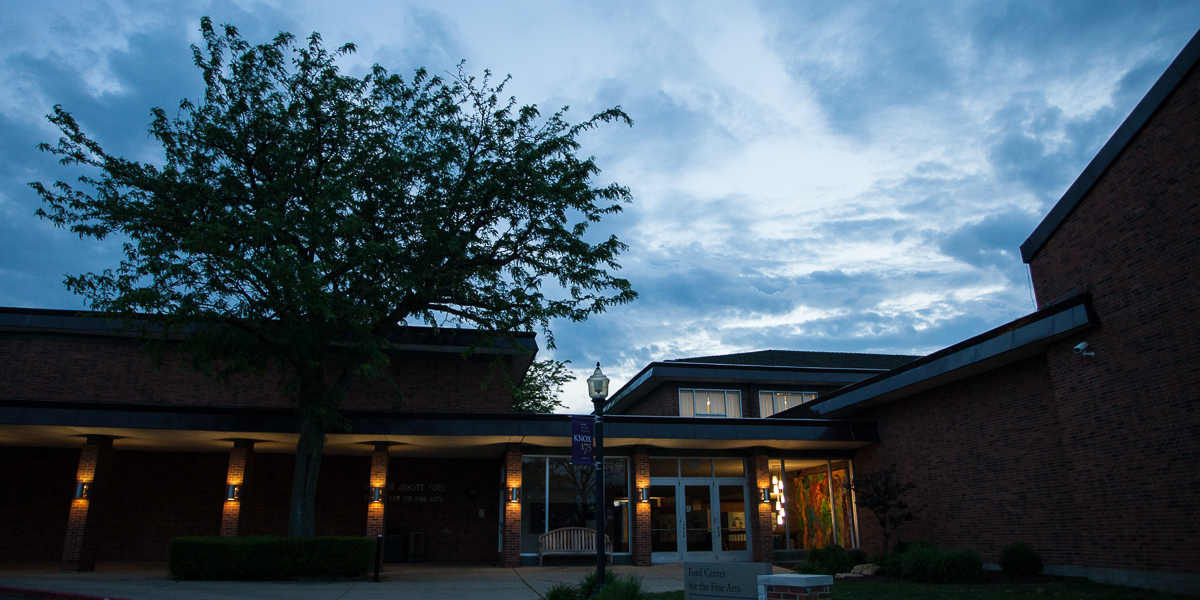

Venture Boldly

Office of Communications
2 East South Street
Galesburg, IL 61401

Last fall, approximately 12 Knox College students found themselves in a tight spot. Armed with flashlights, traction shoes and helmets, Kathleen Beeson '09 and Will Gallmeyer '09 led members of the Outdoor Recreation club on an expedition. Kathleen and Will are the two primary officers of the club that "has been rather dormant for several years," Kathleen says.
The group decided to make the outside in with a cave exploration or 'spelunking' trip. Knox supplied transportation and camping reservations. Traveling on Friday, the group spent the night at a boy scout camp in Baldwin and saved the spelunking for a day of exploration on Saturday.
The group explored the archeological relics of the past by prowling the Illinois Caverns, southeast of St. Louis. This was no easy feat and the explorers, who follow a strict code of personal ethics regarding their investigation, surveyed the caves for the art of exploration and education.
Spelunking has both physical and mental challenges. Some cavers are drawn underground by the simple love of exploration, others enjoy the science of mapping and researching cave-dwelling species, and others find it a spiritual experience.
"We saw stalactites and stalagmites and could see and feel the erosion patterns left from water streaming through the caves," Kathleen says. She has been camping and caving for most of her life. "It was a challenge to climb the walls because they were so wet and slimy."
Will admits that he had never caved before the fall trip. "I was a little claustrophobic. There were some tight holes that we had to get through," he says. "The water streams had formed a ladder system that we had to descend right at the entrance. At times we were up to our knees in water, it was a different experience. We were really wet and muddy when we came out."
An anthropology/sociology major, Will plans on developing critical infrastructure in developing nations. Kathleen plans on pursuing a career in medicine after she earns her degree in biology.
"We had a good mix of people who had caved or camped and some that were there for the first time," Kathleen says. "Caves can be cold, damp and muddy or dusty-dry, but one thing they all are is dark and can be dangerous if you don't have the right gear like flashlights, good shoes, clothes that protect you from the environment and helmets to protect you from falling rock or from bumping your head."
For the most part, this trip offered easy exploration, but at times required tight crawls and fumbling through slimy, wet corridors. Although each member had a flashlight, both Kathleen and Will concur that it is safer to have more than one flashlight per person.
"There was one flashlight that quit working. I think the battery died. Someone else had one that they constantly had to keep their finger on the switch. That can be challenging when trying to climb or navigate a dangerous descent," Kathleen says.
The group checked in with the outpost station that enforces an out-by- 4 p.m. rule to ensure nobody stays lost. "The most important thing to do before caving is actually tell someone where you are going," Kathleen says. "It is also important to know one's limitations."
Responsible caving is a caver's insurance that they don't spend the rest of their existence stuck underground with no light, food or water. It also means leaving the cave exactly as you find it. "Responsible cavers don't litter or take anything. We also leave the cave-dwelling species alone. I only saw four bats on this trip. Bats are fragile and hibernate in the winter. They are important to the environment in reducing insect pest population," Kathleen says.
Published on February 03, 2007